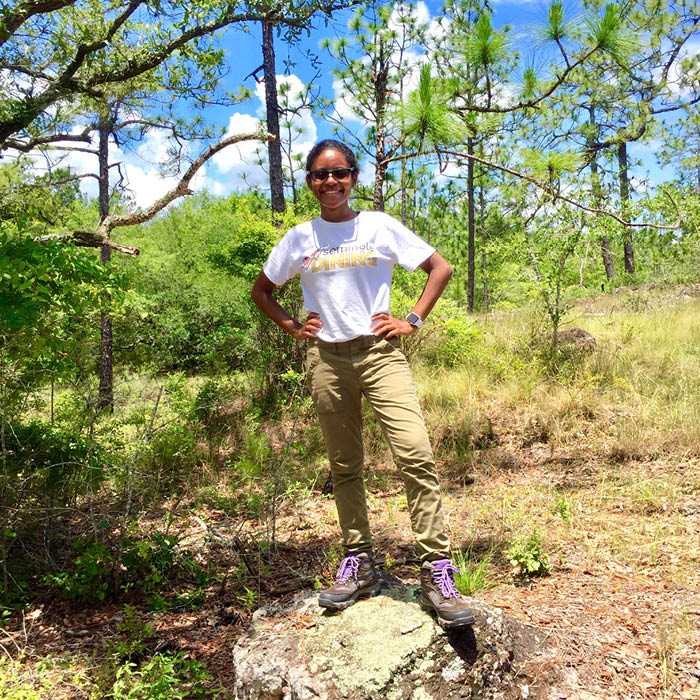Describe the steps you took to obtain your internship/research opportunity/fellowship.
When I heard about this opportunity to work as a research assistant on longleaf pine research, I quickly emailed the researcher to express my interest in joining her team. The following week, I met with the researcher and her advisor to interview and finalize the details of me applying for this internship.
How far in advance did you prepare and begin applying for your experiential learning opportunity?
I began preparing for my experiential learning opportunity about a month in advance. This provided me ample time to get everything needed for the internship like appropriate gear and attire.
If you used any Career Center services, resources, or events to obtain your internship/research opportunity/fellowship, what were they? How did they support your application process?
I didn't use any Career Center service to obtain this internship. However, it was great for me to be able to reflect on this internship through the Career Center's Experience Recognition Program.
Describe some of your responsibilities or duties during your experiential learning opportunity.
During this opportunities, my main responsibilities included keeping track of all the data sheets while out in the field as well as making sure I had the right equipment. I focused on the data collection of measurements of longleaf pine trees in various forests throughout the state and obtaining tree core samples of some of the trees.
What was a typical day like "on the job?"
A typical day included waking up at the crack of dawn to head out to a Longleaf Pine Forest. Once there, we would hike out to the site where we would lay our plots. This included using transects, which are very long measuring tapes, to divide an area into eight subsections which we referred to as cells. Once divided, I'd get to work on taking a GPS point of the first five trees in each cell, then measuring the diameter at breast height (DBH) for each tree as well as placing them into their respective size categories. Once the measurements were completed, we'd then get to work on obtaining tree core samples. This is when we use an increment borer to manually drill a hole into the tree in order to get a sample of it. Once the core is obtained, we store it in pre-labeled straws. We then repeat that about 50 times.
What are some major takeaways from your experience? How will these help prepare you for the next step after graduation?
This experience gave me a lot of field work experience that will be very valuable for me after graduation as the area of work I hope to enter entails knowing many field methods and skills which I have luckily learned throughout this experience.
Did this experience help clarify your career path? If yes, how so?
This experience definitely helped clarify my career path by getting me amped up about studies in the field of biogeography and showing me how tough but rewarding it can be to work outdoors and conduct research. This experience has fortified my passion for environmental research.

Savana Roach
"This research experience gave me a lot of field work experience that will be very valuable for me after graduation in my field."
Major: Environment & Society and Spanish, Class of 2019
Company/Organization: FSU Department of Geography
LinkedIn: https://www.linkedin.com/in/savana-roach-260814157/

